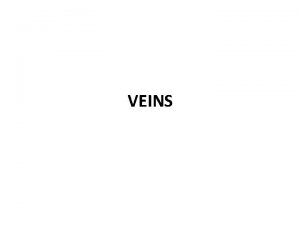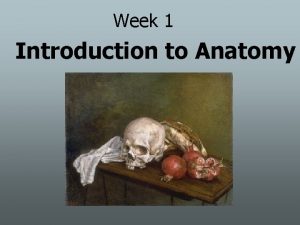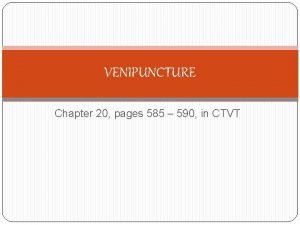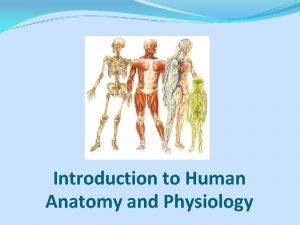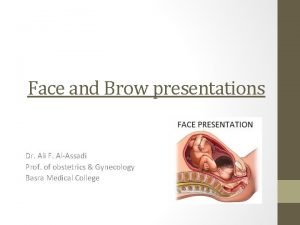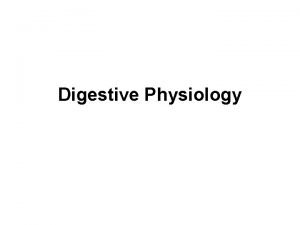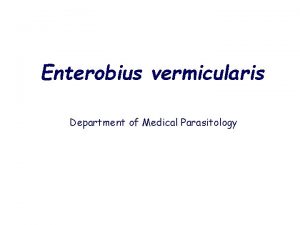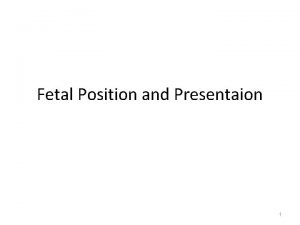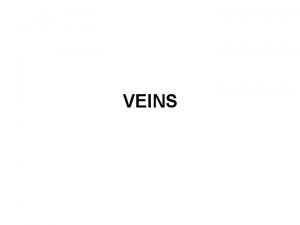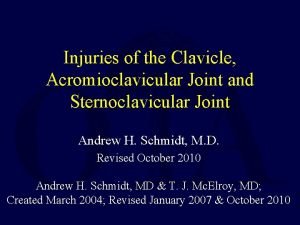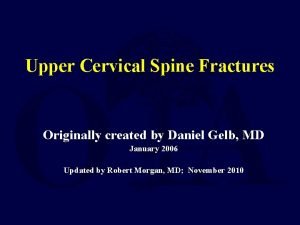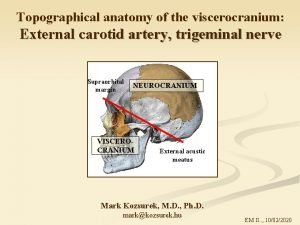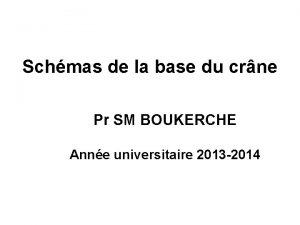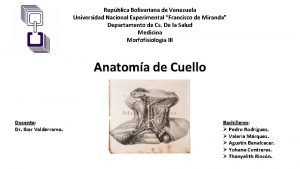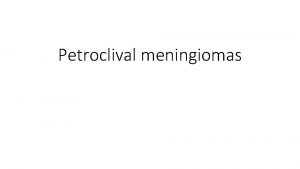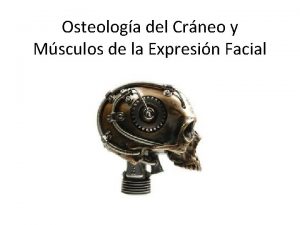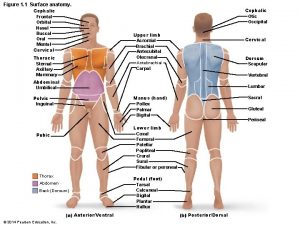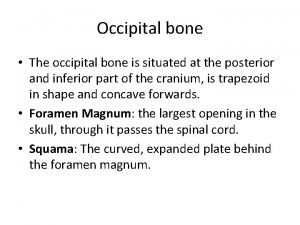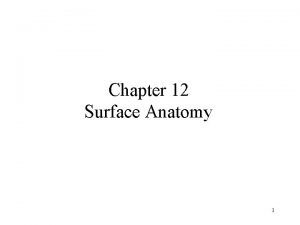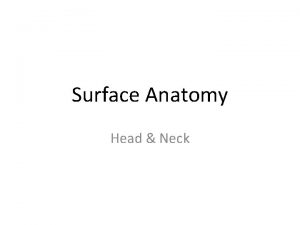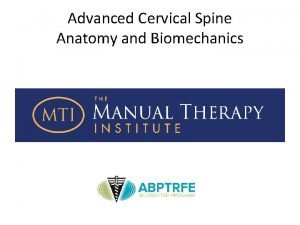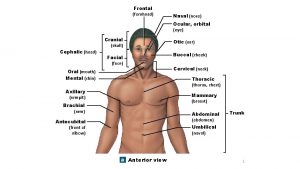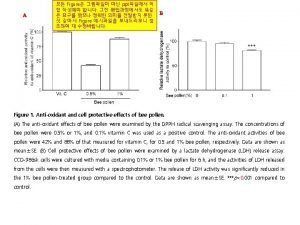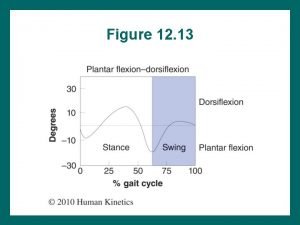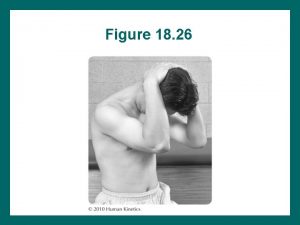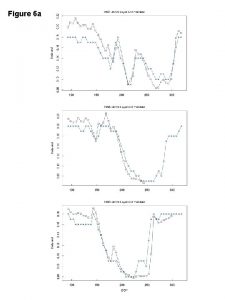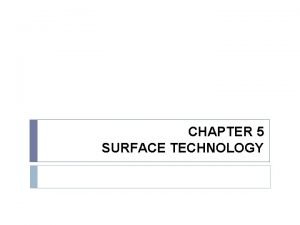Figure 1 1 Surface anatomy Cephalic Otic Occipital

































- Slides: 33

Figure 1. 1 Surface anatomy. Cephalic Otic Occipital Cephalic Frontal Orbital Nasal Buccal Oral Mental Cervical Upper limb Acromial Brachial Antecubital Olecranal Thoracic Sternal Axillary Mammary Cervical Dorsum Scapular Antebrachial Carpal Vertebral Abdominal Umbilical Lumbar Manus (hand) Pollex Palmar Digital Pelvic Inguinal Gluteal Perineal Lower limb Coxal Femoral Patellar Popliteal Crural Sural Fibular or peroneal Pubic Thorax Pedal (foot) Tarsal Calcaneal Digital Plantar Hallux Abdomen Back (Dorsum) Anterior/Ventral © 2014 Pearson Education, Inc. Sacral Posterior/Dorsal

Figure 1. 1 a Surface anatomy. Cephalic Frontal Orbital Nasal Buccal Oral Mental Cervical Upper limb Acromial Brachial Antecubital Olecranal Thoracic Sternal Axillary Mammary Antebrachial Carpal Abdominal Umbilical Manus (hand) Pollex Palmar Digital Pelvic Inguinal Lower limb Coxal Femoral Patellar Pubic Crural Fibular or peroneal Thorax Pedal (foot) Tarsal Abdomen Back (Dorsum) Digital Hallux Anterior/Ventral © 2014 Pearson Education, Inc.

Figure 1. 1 b Surface anatomy. Cephalic Otic Occipital Upper limb Acromial Brachial Cervical Olecranal Dorsum Scapular Antebrachial Vertebral Lumbar Manus (hand) Sacral Gluteal Digital Perineal Lower limb Femoral Popliteal Sural Fibular or peroneal Thorax Abdomen Pedal (foot) Back (Dorsum) Calcaneal Plantar Posterior/Dorsal © 2014 Pearson Education, Inc.

Figure 1. 2 Anatomical terminology describing body orientation and direction. Superior (cephalad) Posterior (dorsal) Anterior (ventral) Superior (dorsal) Proximal Posterior (caudal) Anterior (cephalad) Distal Inferior (caudal) © 2014 Pearson Education, Inc. Inferior (ventral)

Figure 1. 2 a Anatomical terminology describing body orientation and direction. Superior (cephalad) Posterior (dorsal) Anterior (ventral) Proximal Distal Inferior (caudal) © 2014 Pearson Education, Inc.

Figure 1. 2 b Anatomical terminology describing body orientation and direction. Superior (dorsal) Posterior (caudal) Anterior (cephalad) Inferior (ventral) © 2014 Pearson Education, Inc.

Figure 1. 3 Planes of the body with corresponding magnetic resonance imaging (MRI) scans. Frontal plane Median (midsagittal) plane Transverse plane Frontal section (through torso) Left and Liver Heart right lungs Stomach © 2014 Pearson Education, Inc. Transverse section (through torso, inferior view) Liver Arm Spinal cord Aorta Pancreas Spleen Subcutaneous fat layer Body wall Median (midsagittal) section Rectum Vertebral Intestines column

Figure 1. 3 a Planes of the body with corresponding magnetic resonance imaging (MRI) scans. Frontal plane Median (midsagittal) plane Transverse plane Frontal section (through torso) Left and Liver Heart right lungs Stomach © 2014 Pearson Education, Inc. Arm

Figure 1. 3 b Planes of the body with corresponding magnetic resonance imaging (MRI) scans. Frontal plane Median (midsagittal) plane Transverse section (through torso, inferior view) Liver Spinal cord Aorta Pancreas Spleen Subcutaneous fat layer Body wall © 2014 Pearson Education, Inc.

Figure 1. 3 c Planes of the body with corresponding magnetic resonance imaging (MRI) scans. Frontal plane Median (midsagittal) plane Transverse plane Median (midsagittal) section Rectum Vertebral Intestines column © 2014 Pearson Education, Inc.

Figure 1. 4 Objects can look odd when viewed in section. Cross section Midsagittal section Frontal sections © 2014 Pearson Education, Inc.

Figure 1. 4 a Objects can look odd when viewed in section. Cross section © 2014 Pearson Education, Inc.

Figure 1. 4 b Objects can look odd when viewed in section. Midsagittal section © 2014 Pearson Education, Inc.

Figure 1. 4 c Objects can look odd when viewed in section. Frontal sections © 2014 Pearson Education, Inc.

Figure 1. 5 Dorsal and ventral body cavities and their subdivisions. Cranial cavity (contains brain) Vertebral cavity Dorsal body cavity Thoracic cavity (contains heart and lungs) Vertebral cavity (contains spinal cord) Superior mediastinum Pleural cavity Pericardial cavity within the mediastinum Diaphragm Abdominal cavity (contains digestive viscera) Pelvic cavity (contains urinary bladder, reproductive organs, and rectum) Dorsal body cavity Ventral body cavity Lateral view © 2014 Pearson Education, Inc. Abdominopelvic cavity Anterior view Ventral body cavity (thoracic and abdominopelvic cavities)

Figure 1. 5 a Dorsal and ventral body cavities and their subdivisions. Cranial cavity (contains brain) Dorsal body cavity Thoracic cavity (contains heart and lungs) Vertebral cavity (contains spinal cord) Superior mediastinum Pleural cavity Pericardial cavity within the mediastinum Diaphragm Abdominal cavity (contains digestive viscera) Pelvic cavity (contains urinary bladder, reproductive organs, and rectum) Dorsal body cavity Ventral body cavity Lateral view © 2014 Pearson Education, Inc.

Figure 1. 5 b Dorsal and ventral body cavities and their subdivisions. Cranial cavity Vertebral cavity Thoracic cavity (contains heart and lungs) Superior mediastinum Pleural cavity Pericardial cavity within the mediastinum Diaphragm Abdominal cavity (contains digestive viscera) Abdominopelvic cavity Pelvic cavity (contains urinary bladder, reproductive organs, and rectum) Dorsal body cavity Anterior view © 2014 Pearson Education, Inc. Ventral body cavity (thoracic and abdominopelvic cavities) Ventral body cavity

Figure 1. 6 Serous membranes of the ventral body cavities. Parietal peritoneum Parietal pleura Visceral peritoneum Visceral pleura Parietal pericardium © 2014 Pearson Education, Inc. Visceral pericardium

Figure 1. 6 Serous membranes of the ventral body cavities. (1 of 2) Parietal peritoneum Visceral peritoneum © 2014 Pearson Education, Inc.

Figure 1. 6 Serous membranes of the ventral body cavities. (2 of 2) Parietal pleura Visceral pleura Parietal pericardium © 2014 Pearson Education, Inc. Visceral pericardium

Figure 1. 7 Abdominopelvic quadrants. Right upper quadrant (RUQ) Left upper quadrant (LUQ) Right lower quadrant (RLQ) Left lower quadrant (LLQ) © 2014 Pearson Education, Inc.

Figure 1. 8 Abdominopelvic regions. Right hypochondriac region Epigastric region Left hypochondriac region Right lumbar region Umbilical region Left lumbar region Right iliac (inguinal) region Hypogastric (pubic) region Left iliac (inguinal) region © 2014 Pearson Education, Inc. Liver Diaphragm Spleen Gallbladder Stomach Ascending colon of large intestine Transverse colon of large intestine Small intestine Descending colon of large intestine Cecum Appendix Initial part of sigmoid colon Urinary bladder

Figure 1. 8 a Abdominopelvic regions. Right hypochondriac region © 2014 Pearson Education, Inc. Epigastric region Right lumbar region Umbilical region Right iliac (inguinal) region Hypogastric (pubic) region Left hypochondriac region Left lumbar region Left iliac (inguinal) region

Figure 1. 8 b Abdominopelvic regions. Liver Diaphragm Spleen Gallbladder Stomach Ascending colon of large intestine Transverse colon of large intestine Small intestine Descending colon of large intestine Cecum Initial part of sigmoid colon Appendix Urinary bladder © 2014 Pearson Education, Inc.

Figure 1. 9 Other body cavities. Orbital cavity (orbit) Nasal cavity Oral cavity (mouth) Tongue © 2014 Pearson Education, Inc. Middle ear cavity Synovial cavity in a joint between neck vertebrae Fibrous layer around joint

Review Figure 1. 1 © 2014 Pearson Education, Inc.

Review Figure 1. 2 © 2014 Pearson Education, Inc.

Review Figure 1. 2 a © 2014 Pearson Education, Inc.

Review Figure 1. 2 b © 2014 Pearson Education, Inc.

Review Figure 1. 2 c © 2014 Pearson Education, Inc.

Review Figure 1. 3 © 2014 Pearson Education, Inc.

Review Figure 1. 4 © 2014 Pearson Education, Inc.

Review Figure 1. 5 Body cavities 1 Dorsal body cavity 3 cavity (superior) 4 cavity (inferior) 2 Ventral body cavity 5 6 cavity (superior) cavity 7 (inferior) 8 © 2014 Pearson Education, Inc. cavity (superior) cavity (inferior)
 Vestibulo ocular reflex
Vestibulo ocular reflex Right innominate vein
Right innominate vein Regional terms anatomy
Regional terms anatomy Canine venipuncture
Canine venipuncture Art-labeling activity: figure 23.33a (1 of 2)
Art-labeling activity: figure 23.33a (1 of 2) Retrogastric medical terminology
Retrogastric medical terminology Anatomical body regions
Anatomical body regions Mentoanterior position vs mentoposterior
Mentoanterior position vs mentoposterior Protein absorption
Protein absorption Rlatg
Rlatg Cephalic vein venipuncture
Cephalic vein venipuncture Supratrochlear lymph node
Supratrochlear lymph node Cephalic vein dog
Cephalic vein dog Cephalic alae
Cephalic alae Brow presentation birth
Brow presentation birth Vertex presentation
Vertex presentation Cephalic periarterial nerves
Cephalic periarterial nerves Superior mesenteric artery model
Superior mesenteric artery model Cephalic presentaion
Cephalic presentaion Anterior posterior ventral dorsal
Anterior posterior ventral dorsal Bicep vein name
Bicep vein name West point view shoulder
West point view shoulder Cephalic view
Cephalic view Occipital condyle fracture
Occipital condyle fracture Contenido del triangulo occipital
Contenido del triangulo occipital Ophthalmic artery branches off
Ophthalmic artery branches off Shoulder presentation
Shoulder presentation Occipital lobe function
Occipital lobe function Ecaille occipital
Ecaille occipital Occipitofrontalis
Occipitofrontalis Esternotirohiodeo
Esternotirohiodeo Clivus of occipital bone
Clivus of occipital bone Elevador comun del labio superior
Elevador comun del labio superior Occipital neuralgia exercises
Occipital neuralgia exercises

